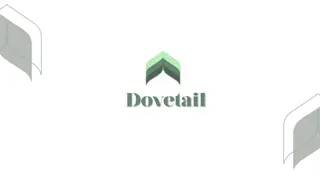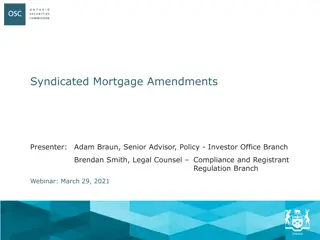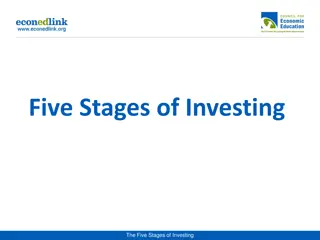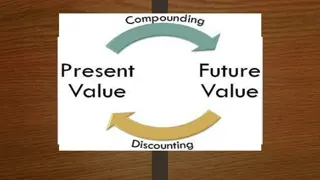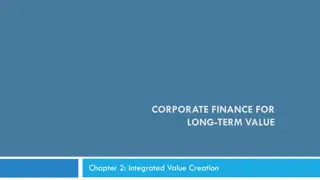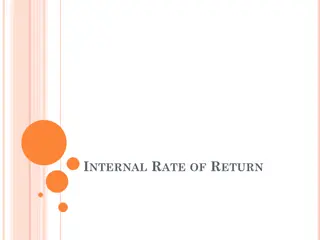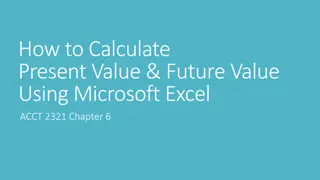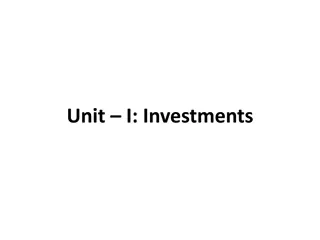
Future Value of Investments in Financial Algebra
Learn how to effectively plan for future balances in accounts by utilizing compound interest and the future value of investments formula. Examples illustrate the calculations for retirement savings, interest earned, and long-term deposits.
Download Presentation

Please find below an Image/Link to download the presentation.
The content on the website is provided AS IS for your information and personal use only. It may not be sold, licensed, or shared on other websites without obtaining consent from the author. If you encounter any issues during the download, it is possible that the publisher has removed the file from their server.
You are allowed to download the files provided on this website for personal or commercial use, subject to the condition that they are used lawfully. All files are the property of their respective owners.
The content on the website is provided AS IS for your information and personal use only. It may not be sold, licensed, or shared on other websites without obtaining consent from the author.
E N D
Presentation Transcript
2-7 Future Value of Investments Advanced Financial Algebra
How can you effectively plan for the future balance in an account? Compound interest means that you are paid interest on your balance AND on previous interest you have earned. Suppose you open an account that pays interest and make not further deposits. You can use this formula to figure out your future balance: ? ?)(??) A = P(1 + However, many people would like to add money every month or every year at regular intervals. That makes the future balance more work to calculate.
Future Value of Investments formula DO NOT NEED TO MEMORIZE P still stands for principal, but it is the amount you deposit EACH TIME, not once. Future value of investments formula: (?((1+? ?)?? ?)) ? ? ? = A = amount $ after time n = number of compounds per year P = Principal (periodic deposit $) t = time in years r = rate as a decimal
Example 1 saving for retirement Rich and Laura are both 45 years old and want to retire at the age of 65. They deposit $5,000 each year into a bank account that pays 1.25% interest, compounded annually. What is the account balance when Rich and Laura retire? SOLUTION: Use the future value of investments formula since retirement is in the future. (?((1+? (?,???((1+.0125 ?)?? ?)) ? ? )1 20 ?)) = = $112,814.89 when they retire 1 ? = .???? ?
Example 2 interest only? How much interest will Rich and Laura earn over the 20-year period in example #1? SOLUTION: First, find out how much they saved total: $5,000 per year for 20 years = 5000*20 = $100,000 Subtract final balance minus amount saved = $112,814.89 - $100,000 They earned $12,814.89 in interest during those 20 years.
Example 3 evaluate the limit using graph Linda and Rob open an online savings account that has a 1% annual interest rate, compounded monthly. If they deposit $1,200 every month, how much will be in the account after 10 years? SOLUTION: Use the future value of investments formula since 10 years is in the future. P = $1,200 n = 12 r = 1% = .01 t= 10 years (?((1+? (????((1+.01 ?)?? ?)) ? ? 12)12 10 ?)) .?? ?? = = $151,379.85 in ten years ? =
Assignment: pg 108 #8 only, pg 113 #4 & 8 cont. Pg 113 #4 #8






